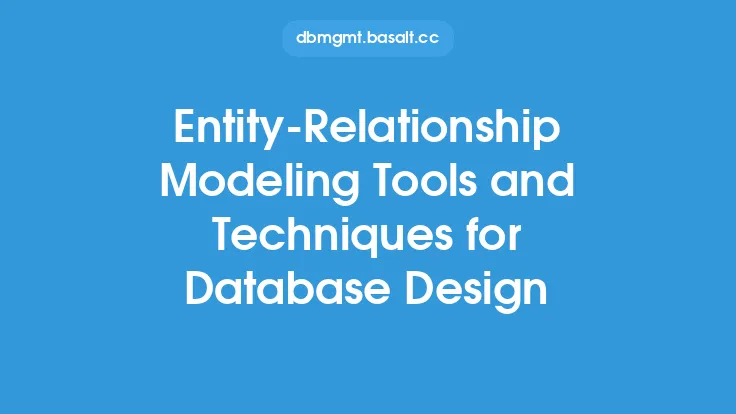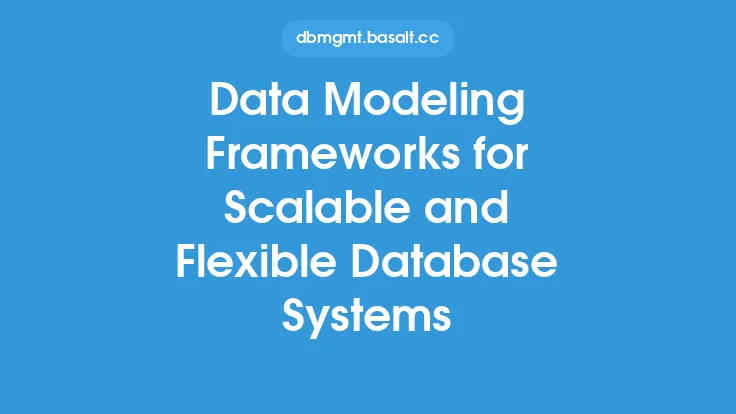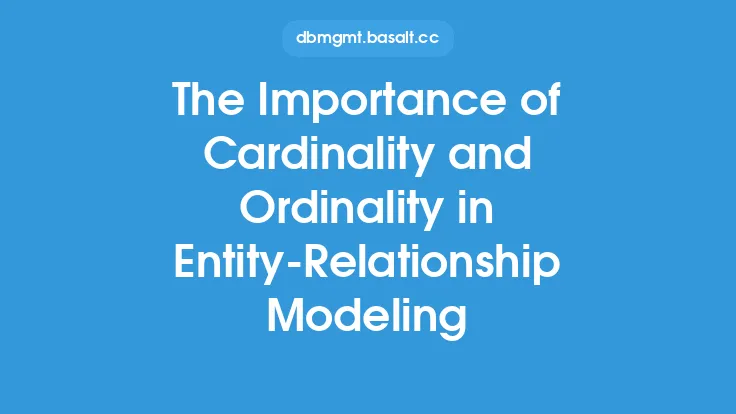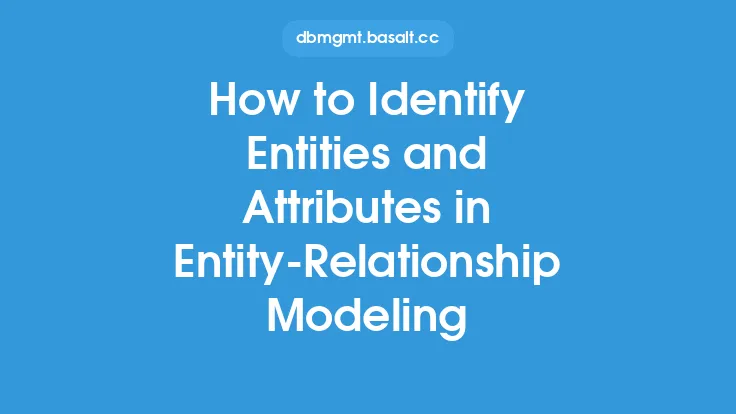Entity-Relationship Modeling (ERM) is a fundamental concept in database design that enables the creation of a conceptual representation of the data structure for an application or system. It involves identifying entities, attributes, and relationships between them to form a blueprint for the database. One of the critical aspects of ERM is its role in database normalization and denormalization. Normalization is the process of organizing data in a database to minimize data redundancy and dependency, while denormalization is the process of intentionally deviating from normalization to improve performance.
Introduction to Database Normalization
Database normalization is a technique used to organize data in a database to minimize data redundancy and dependency. It involves dividing large tables into smaller tables and linking them through relationships. Normalization helps to eliminate data anomalies, such as insertion, update, and deletion anomalies, which can occur when data is redundant or dependent. There are several normalization rules, including First Normal Form (1NF), Second Normal Form (2NF), Third Normal Form (3NF), and Boyce-Codd Normal Form (BCNF). Each rule builds on the previous one, and the goal is to achieve a higher level of normalization to ensure data consistency and reduce data redundancy.
Role of Entity-Relationship Modeling in Database Normalization
ERM plays a crucial role in database normalization. By identifying entities, attributes, and relationships, ERM helps to create a conceptual representation of the data structure that can be used to normalize the data. The entity-relationship model can be used to identify the tables, columns, and relationships that are required to store the data. The model can also be used to identify the dependencies between the data, which is essential for normalization. For example, if an entity has a composite attribute, it may be necessary to create a separate table to store the attribute values. ERM helps to identify these dependencies and create a normalized data structure.
Denormalization and Its Role in Database Design
Denormalization is the process of intentionally deviating from normalization to improve performance. While normalization is essential for data consistency and reducing data redundancy, it can sometimes lead to slower query performance. Denormalization involves combining tables or adding redundant data to improve query performance. However, denormalization can also lead to data inconsistencies and anomalies, which can be challenging to manage. ERM can help to identify the areas where denormalization is necessary and create a data structure that balances normalization and denormalization.
Techniques for Denormalization
There are several techniques for denormalization, including data duplication, data aggregation, and pre-computation. Data duplication involves storing redundant data to improve query performance. For example, if a query requires data from two tables, it may be faster to store the data in a single table, even if it means duplicating some data. Data aggregation involves storing aggregated data, such as summary data, to improve query performance. Pre-computation involves storing pre-computed values, such as calculated columns, to improve query performance. ERM can help to identify the areas where these techniques can be applied and create a data structure that balances normalization and denormalization.
Challenges and Considerations
While ERM is essential for database normalization and denormalization, there are several challenges and considerations that need to be taken into account. One of the challenges is balancing normalization and denormalization. Normalization is essential for data consistency, but denormalization can improve performance. ERM can help to identify the areas where denormalization is necessary, but it requires careful consideration of the trade-offs. Another challenge is managing data inconsistencies and anomalies that can occur due to denormalization. ERM can help to identify the areas where data inconsistencies can occur and create a data structure that minimizes these inconsistencies.
Best Practices for Entity-Relationship Modeling and Database Normalization
There are several best practices for ERM and database normalization. One of the best practices is to start with a conceptual model and then create a logical model. The conceptual model should identify the entities, attributes, and relationships, while the logical model should identify the tables, columns, and relationships. Another best practice is to use a consistent naming convention and to document the data structure. ERM can help to create a consistent and well-documented data structure that is essential for database normalization and denormalization.
Conclusion
In conclusion, ERM is a fundamental concept in database design that plays a critical role in database normalization and denormalization. By identifying entities, attributes, and relationships, ERM helps to create a conceptual representation of the data structure that can be used to normalize the data. While normalization is essential for data consistency, denormalization can improve performance. ERM can help to identify the areas where denormalization is necessary and create a data structure that balances normalization and denormalization. By following best practices and considering the challenges and trade-offs, ERM can help to create a well-designed database that is essential for any application or system.





